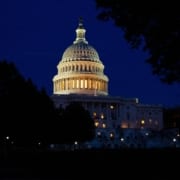On Wednesday, President Biden issued an executive order ending Proclamation 10014, the Trump-era ban on new green cards during the COVID-19 pandemic.
Proclamation 10014 was issued by former President Trump in April at the start of the coronavirus pandemic to bar the issuance of visas at U.S. Consulates and Embassies abroad and limit the entry of certain noncitizen classes. In June, Trump signed a new executive order (Proclamation 10052) which extended Proclamation 10014 and added new restrictions for nonimmigrant workers who supposedly pose a risk of disadvantaging U.S. workers during the coronavirus recovery. This includes nonimmigrant workers on H-1B, H-2B, J, and L visas. This order was rationalized by the need to protect U.S. jobs amid high unemployment rates caused by the pandemic. Critics of Trump have accused him of using the pandemic as an excuse to fuel his political agenda of restricting immigration. Many studies rebuke the idea that immigration threatens American jobs.
Yesterday, Biden overturned the measure by way of executive order. In his order, he wrote that rather than advancing the interests of the U.S., the Trump-era ban “harms the United States, including by preventing certain family members of United States citizens and lawful permanent residents from joining their families here.â€
The Migration Policy Institute estimates that about 26,000 people monthly were prevented from getting green cards since the ban was implemented in April 2020.
Biden also denounced the Trump-era policies for harming U.S. industries that utilize expertise from individuals of various countries of origin. Proclamation 10014 has also been criticized for preventing individuals who received immigrant visas through the Fiscal Year 2020 Diversity Visa Lottery from entering the U.S., which resulted in the delay and possible loss of their opportunity to receive their visas.
Proclamation 10014 was set to expire on March 31st, and human rights advocates have been calling for Biden to overturn this measure since he took office. While its overturn is a win for immigrant rights activists, there are concerns about how DHS will process these applications. The U.S. is currently facing a backlog of hundreds of thousands of visa applicants. One immigration lawyer admitted, “that backlog may take [Biden’s] entire first term to clear out, unless he is ambitious to doing something to solve that problem.†Boundless estimated that Trump’s ban could lead to a backlog of 358,000 green cards.
Under Biden’s new order, family members of U.S. citizens and green card holders will be able to now immigrate to the U.S. This also includes individuals who were selected to get visas through the visa lottery. Note, however, Vox reports that even though Biden is reversing Proclamation 10014, many foreign workers applying for temporary visas are still barred from entering the U.S. until at least March 31st, 2021. This includes H-1B skilled workers and their spouses applying for H-4 visas as their dependents. Foreigners transferring to the U.S. office of their multinational companies through L visas, as well as scholars on J-1 visas, are still banned for the time being. It is unclear when Biden will lift immigration restrictions for these visa applicants.
Since he took office, Biden has overturned many of Trump’s most well-known anti-immigration policies, like the so-called Muslim travel ban and he has started to process asylum seekers at the southern border subject to the Migration Protection Protocols, also known as the “Remain in Mexico†policy.











